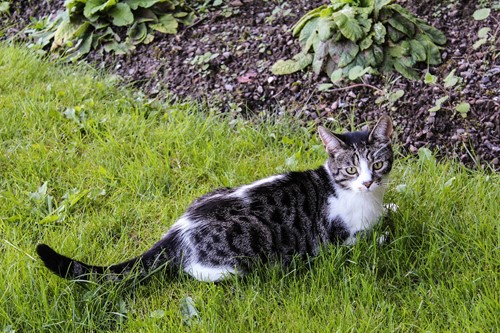
Catnip is an herb of many talents. Besides being famously loved by cats, it also has many benefits for your home and garden. Catnip can be particularly beneficial when grown in vegetable gardens because of its pest-repelling properties. Here we’ll go into detail about how and why to use catnip in your vegetable garden.
Bug Repellent
One of catnip’s most useful features is that the oil in its leaves repels a long list of common pests. Growing catnip can keep insects away that would normally bother humans, like mosquitos and flies. It can also keep away pests that pose a threat to your vegetable crops like aphids, weevils, squash bugs and a variety of beetles. It’s even proven effective at keeping away rats, mice and deer and preventing them from causing damage and stealing a free meal.
There are many veggie crops you can grow with catnip. Collared greens are one of the most commonly paired plants with catnip. Collared greens are highly susceptible to damage from flea beetles, which conveniently catnip. Other vegetables like beets, pumpkins, squash and potatoes also do very well with catnip as a companion plant to ward against uninvited insect intruders.
However, an important exception to catnip’s bug-repelling properties is bees and butterflies. The fragrant and hardy flowers that bloom through summer and early autumn are a favorite of honey bees and other pollinators. Planting catnip can provide an excellent source of nectar for bees all throughout the growing season.
Cat Distraction
Cats love catnip, which you can actually use to your advantage in protecting the rest of your garden. One of the key chemical compounds in catnip is called nepetalactone, which creates an excited euphoria in our feline friends. This chemical attracts cats to the plant and is the reason it makes such a great deterrent from your vegetables.
By planting catnip a safe distance from the vulnerable vegetable plants, you can effectively distract your cats from causing trouble in the soil. While organic material is excellent fertilizer, the kind your cat is likely to leave behind is not what your vegetables need to grow strong—not to mention the digging can end up causing damage to root systems and more. If they are distracted by a patch of catnip, however, they will be sufficiently waylaid and do their business elsewhere.
Just make sure you plant the catnip far enough away from your veggies so that any trampling and rolling around doesn’t harm the plants. The catnip itself can take quite a beating once fully mature, but you want to avoid your crops being damaged in all the fun.
Catnip is an extremely useful plant even if you don’t have cats. Many tout the herb’s medicinal properties when steeped into tea. While it might cause excitement in cats, it can have a calming effect on humans, making it a popular choice for promoting relaxation. Its multiple benefits to both humans and the rest of your garden ecosystem make it an excellent choice in companion plant for your vegetables.
About the Author

ELLe B. WiLLson
Elle B. has enjoyed the splendor of Summit County since she was a child spending time at her family condo and skiing the fabulous Keystone slopes.
